Ball Reversals or Paint Touches? Use Analytics to Learn What Drives Efficiency For Your Team.
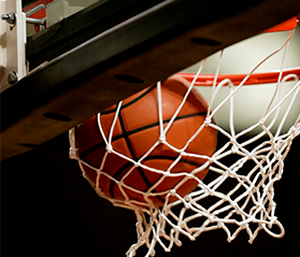 In a study of twelve high division 1 college basketball programs, we gathered data to understand which had a greater impact on offensive efficiency – paint touches, ball reversals, or a combination of the two. To do so, we tracked the number of paint touches and ball reversals before a shot attempt, foul, or turnover in a half-court possession. We categorized each possession into six groups:
In a study of twelve high division 1 college basketball programs, we gathered data to understand which had a greater impact on offensive efficiency – paint touches, ball reversals, or a combination of the two. To do so, we tracked the number of paint touches and ball reversals before a shot attempt, foul, or turnover in a half-court possession. We categorized each possession into six groups:
- No paint touches or ball reversals
- At least one paint touch, no ball reversals
- 1 ball reversal, no paint touches
- 2+ ball reversals, no paint touches
- 1 ball reversal and at least 1 paint touch
- 2+ ball reversals and at least 1 paint touch
Most of the results we found were expected, meaning that better ball movement translates to higher points per possession. However, the data clearly shows that there isn’t a cookie cutter solution to maximize the efficiency of your team.
It’s expected that when there are no paint touches or ball reversals in a possession, offensive efficiency would suffer and turnover rate would be high. On average, teams scored 0.706 PPP and turned the ball over 27% of the time when there were no paint touches or ball reversals in the possession.
What surprised us was that for 25% of the teams, this was not their worst category. In fact, one team, let’s call them Team A, scored 0.893 PPP and turned the ball over just 14% of the time over 319 possessions when there were no ball reversals or paint touches. How could they perform better with bad ball movement than compared to 1 or 2+ ball reversals in a possession? This is because their best player scored 1.060 PPP when there were no ball reversals or paint touches. He was one of the best isolation players that we’ve studied.
Team A’s statistics are displayed below:
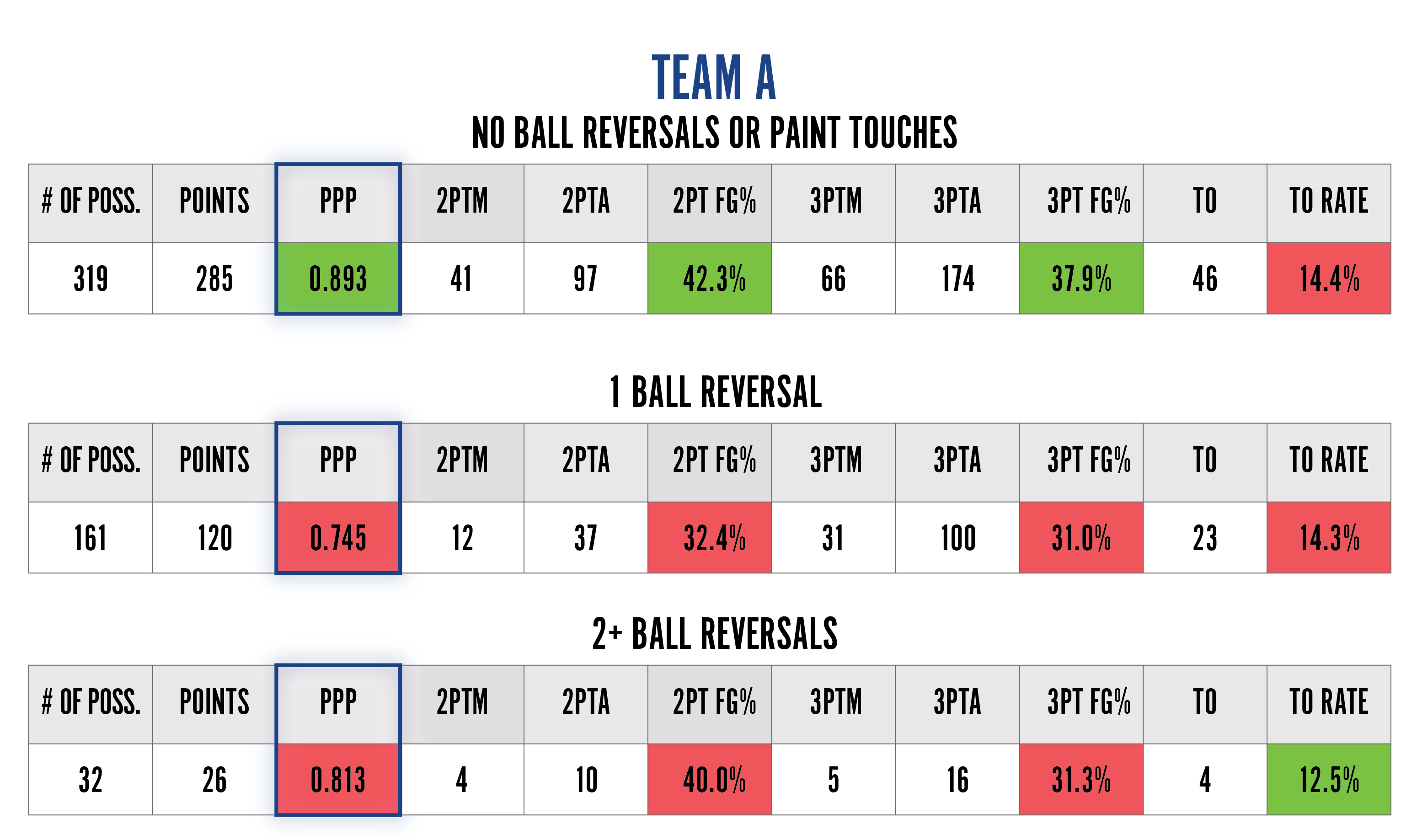
You’d expect that when the ball is reversed from side to side, the offense would have the defense moving, which would create better offensive opportunities. But with this information, Team A’s coach knows that late in a game, he doesn’t want his team to reverse the ball and risk a turnover. They have a better chance of scoring when that player is left in isolation or involved in a pick and roll.
We also expected that if a paint touch occurred in a possession, it would equate to a higher points per possession than had there been only ball reversals. On average this was the case. Teams scored 1.061 PPP when there was only a paint touch in a possession compared to 0.937 PPP if there were only ball reversals. Again, what surprised us was that only seven of our twelve teams experienced better offensive performance with paint touches than with ball reversals. This is because of personnel differences.
For example, Team B played primarily with a four-guard offense, predicated on ball movement and dribble penetration. While their 2PT FG% suffered and TO Rate was higher, their 3PT FG% was 7% better, resulting in a higher points per possession.
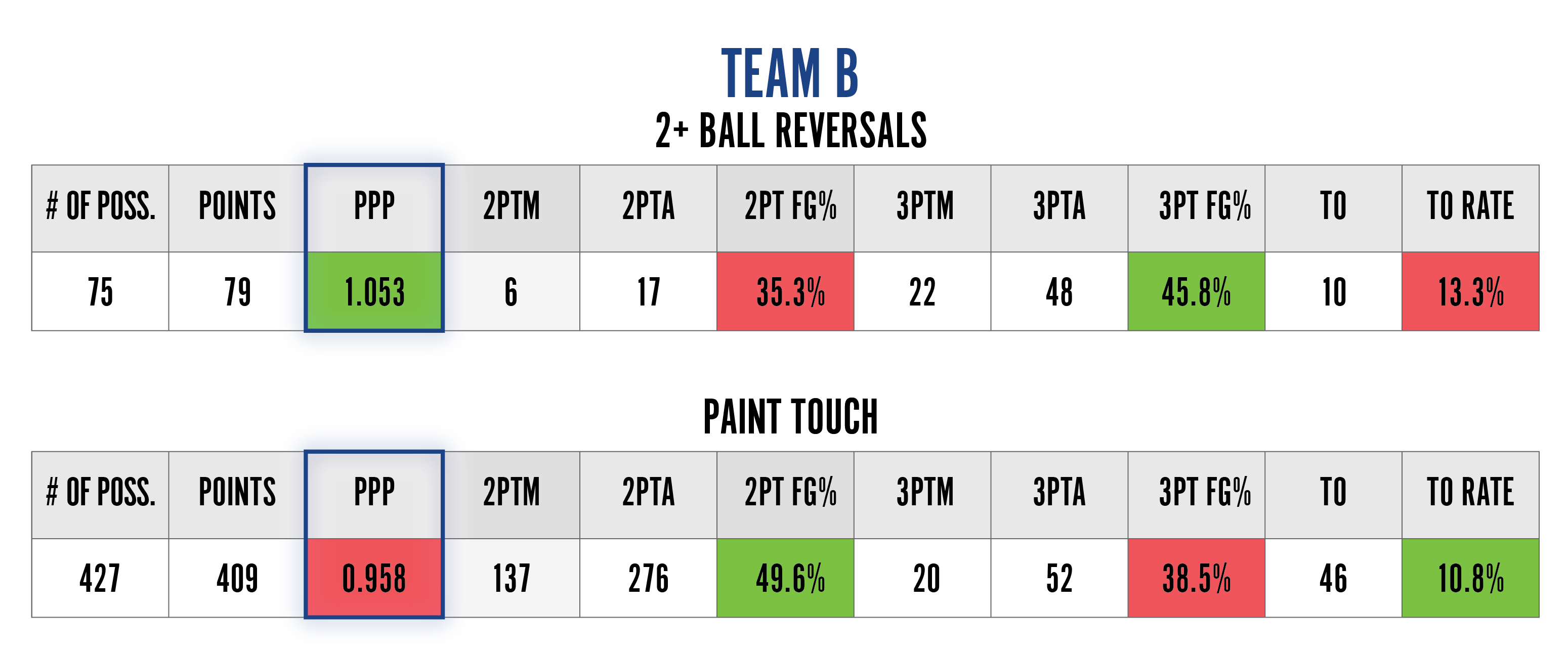
When you compare that to Team C, who played with two traditional post players you can see the difference in how each team scored. They were far better off driving or passing the ball into the paint than swinging the ball around the perimeter.
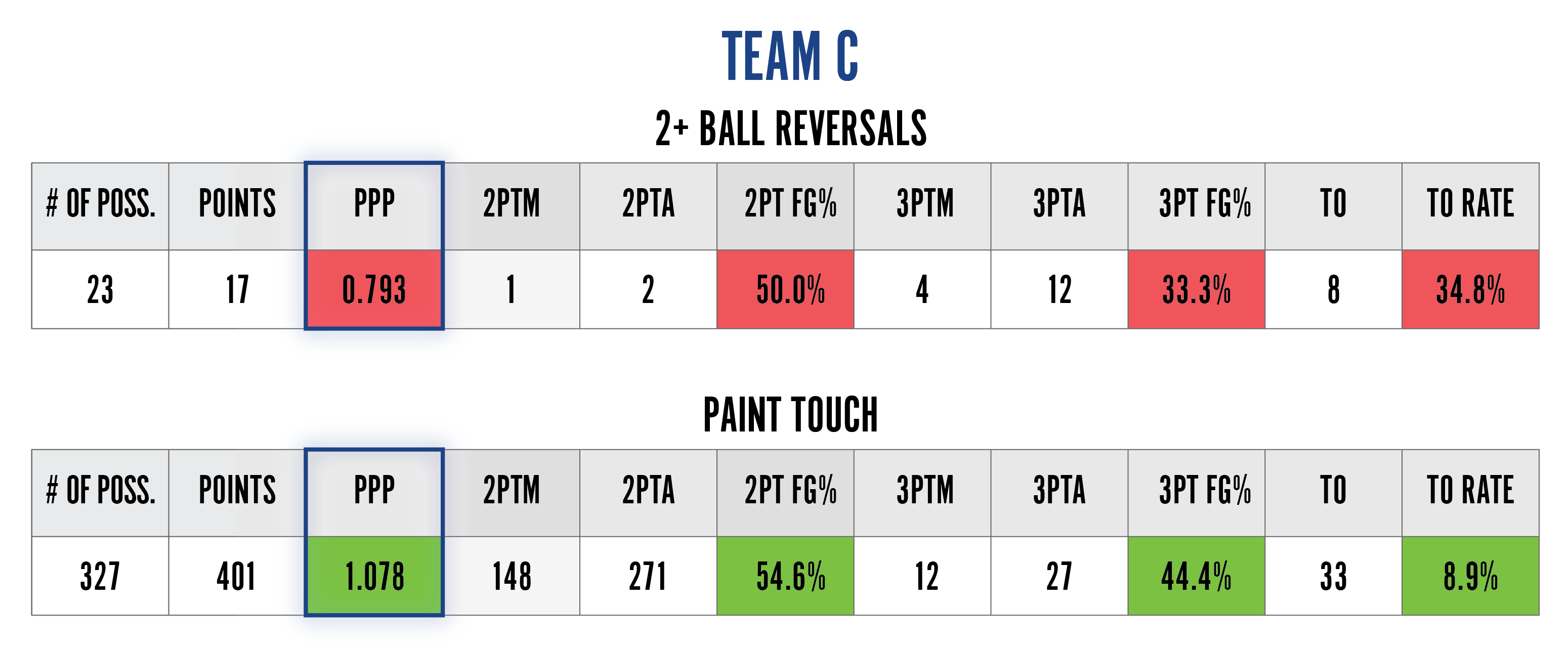
On average, teams fared best when there were 2 or more ball reversals and a paint touch in a possession, scoring 1.189 PPP. But this type of possession only occurred 4% of the time. Four percent! Imagine how much more efficient a team would become if it had 2+ ball reversals and a paint touch in 10% of possessions. Below is a chart that displays the average frequency of each possession type across all teams that we studied.
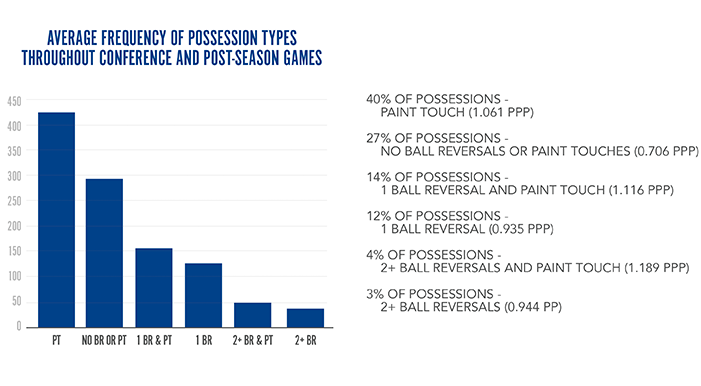
The most frequent type of possession was just getting the ball into the paint – either by pass or by drive. This happened in 40% of possessions. The second most frequent type of possession was no ball reversals or no paint touches – occurring 27% of the time. That number is staggering. In over a quarter of half-court possessions, teams are not reversing the ball or getting into the paint!
Let’s break this down further. The twelve teams that we studied averaged 65 half-court possessions per game throughout their 2016-17 seasons. That means they averaged about 17 possessions per game where there were no ball reversals or paint touches. If they only reduced that number from 17 possessions to 10, and had 7 more possessions that combined 2+ ball reversals and a paint touch, on average, they would score 5 more points per game. For some context on what 5 ppg can mean: Florida State and Syracuse, who compete in the same conference, had an average scoring margin of +10 and +5.2 in the 2016-17 season. Florida State was 26-9, 2nd in the ACC, and a 3 seed in the NCAA Tournament. While Syracuse finished 19-15, 7th in the ACC, and missed the big dance. To make matters worse, Syracuse lost 5 games by 5 or less points. A potential record of 23-9 heading into selection Sunday gets you into the tournament, rather than the 18-14 record that sent them to the NIT. Five points per game can make or break seasons, careers, and even legacies.
Until recently, advanced analytics like these were only available to basketball’s elite. Manually gathering this information from film – including only conference and postseason games – would take over 50 hours. ShotTracker TEAM changes that. With this new technology, coaches at every level of the game can have real-time advanced analytics at their fingertips, captured automatically during practices and games. No longer must they follow generic advice or traditional approaches, they can use analytics to fully understand the dynamics of their specific team and set clear objectives that will win more games.
